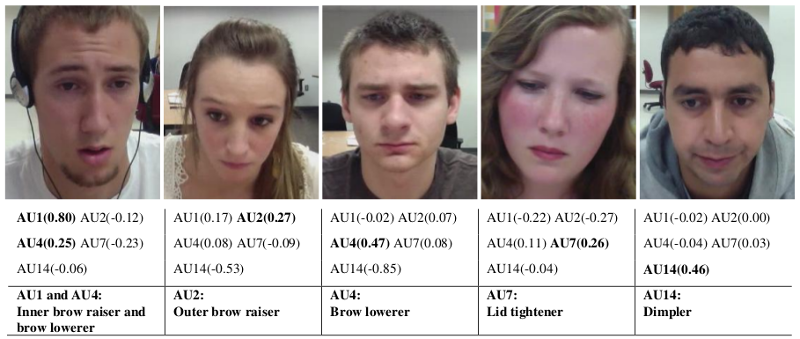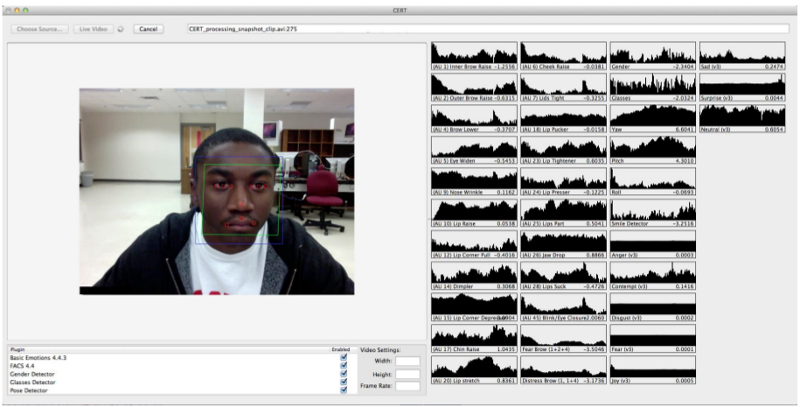Automatic recognition of emotions will improve distance learning
At the University of North Carolina, two rapidly developing technologies have been combined - online learning and automatic recognition of emotions. Scientists conducted a series of experiments , during which, during the course of the course, the students' face was shot by a webcam, a video from which was analyzed by a computer vision system that can recognize facial expressions and human emotions. Based on this data, the computer can modify the learning strategy and provide valuable feedback for teachers - instead of wondering which parts of the lesson are difficult to understand and which parts bore, you can now just watch the statistics.

An example of the automatic detection of movements of facial muscles
The experiment involved 65 students. Facial expression recognition was done using the CERT system , developed at the University of California at San Diego based on the work of psychologist Paul Ekman (the one who became the prototype for the main character of the TV series "Theory of Lie"). The movements of parts of the face - eyebrows, eyes, lips - are encoded using the Coding System of facial movements , and then based on this information, assumptions are made about the nature of emotions that a person experiences.

CERT system screenshot
')
The data obtained automatically, by 85% percent, coincided with the estimates of experts, who also analyzed the emotions of students on video. The prevailing emotions (enthusiasm, interest, excitement, or vice versa - irritation and depression) during the lesson make it possible to predict the result of testing sufficiently accurately. In the future, such systems can overcome one of the main disadvantages of distance learning - the lack of feedback and an individual approach to each student.
Download a PDF with a description of the experiment here .

An example of the automatic detection of movements of facial muscles
The experiment involved 65 students. Facial expression recognition was done using the CERT system , developed at the University of California at San Diego based on the work of psychologist Paul Ekman (the one who became the prototype for the main character of the TV series "Theory of Lie"). The movements of parts of the face - eyebrows, eyes, lips - are encoded using the Coding System of facial movements , and then based on this information, assumptions are made about the nature of emotions that a person experiences.

CERT system screenshot
')
The data obtained automatically, by 85% percent, coincided with the estimates of experts, who also analyzed the emotions of students on video. The prevailing emotions (enthusiasm, interest, excitement, or vice versa - irritation and depression) during the lesson make it possible to predict the result of testing sufficiently accurately. In the future, such systems can overcome one of the main disadvantages of distance learning - the lack of feedback and an individual approach to each student.
Download a PDF with a description of the experiment here .
Source: https://habr.com/ru/post/185460/
All Articles